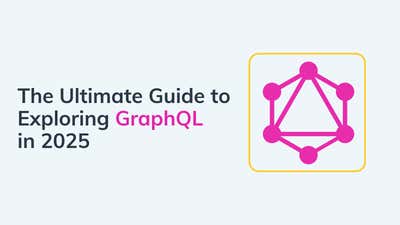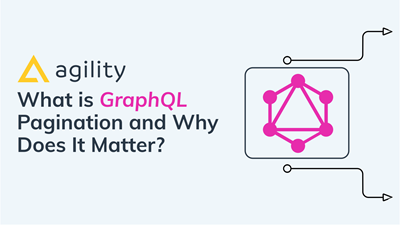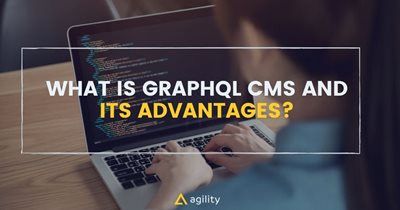GraphQL Errors Demystified: How to Troubleshoot Common Issues
Get unstuck with these helpful tips and tricks


GraphQL is powerful—but when something breaks, understanding the error messages can feel overwhelming. This guide breaks down common GraphQL errors, why they happen, and how to fix them — in plain language.
Whether you’re building with a headless CMS like Agility CMS or testing a GraphQL query in your frontend, these tips will help you debug faster and with more confidence.
What Is a GraphQL Error?
When something goes wrong in GraphQL, the system doesn’t always stop entirely. Instead, it sends back:
-
Some data (if possible)
-
An error section explaining what went wrong
Even if your HTTP status is 200 (success), your query might still contain errors.
A GraphQL error typically includes:
-
message: a clear explanation of what failed
-
path: the part of the query that failed
-
locations: line and column where the issue occurred
You can use tools like GraphQL Playground to test and troubleshoot your queries.
1. Syntax Errors (You Typed Something Wrong)
What it means: The structure of your query has a typo.
Example:
query {
user(id: "123" { name } // Missing closing parenthesis
}
Error Message:
Syntax Error: Expected ) but found {sage
Why it happens: GraphQL expects a very specific structure. A missing comma, brace, or parenthesis will cause it to fail.
Fix: Double-check the query. Use autocomplete in Playground to help.
2. Validation Errors (You Asked for Something That Doesn’t Exist)
What it means: Your query is well-formed, but it’s asking for data that doesn’t exist in the API schema.
Example:
query {
user(id: "1") {
username
}
}
Error Message:
Cannot query field "username" on type "User"Why it happens: Maybe you guessed the wrong field name or misunderstood what the API provides.
Fix: Open the Docs tab in Playground. It shows you every valid field name for each type.
3. Resolver Errors (The Backend Broke While Processing Your Query)
What it means: Your query was valid, but something failed behind the scenes.
Example:
{
"data": { "user": null },
"errors": [
{ "message": "User not found", "path": ["user"] }
]
}
Why it happens: Maybe the user ID doesn’t exist in the database, or there’s a logic error in the server.
Fix: Check your input data. If you’re the API developer, check your resolver logic.
4. Authorization Errors (You Don’t Have Permission)
What it means: You’re trying to access something the API is protecting.
Error Message:
You are not authorized to access this resource
Why it happens: The API requires a valid API key, auth token, or user role.
Fix: Add headers like this in GraphQL Playground:
{ "APIKey": "your-key" }
If you're using Agility CMS, the Playground makes it easy to add this.
5. Network Errors (The Server Isn’t Responding Correctly)
What it means: There’s a problem with the connection, not with your query.
Why it happens:
-
The endpoint is wrong
-
The server is offline
-
You’ve hit a browser security rule (like CORS)
Fix:
-
Make sure the URL is correct
-
Check that the API server is up
-
Look for CORS errors in your browser console
6. Missing Required Arguments (You Forgot to Send Needed Info)
What it means: The API needs a specific input to respond, and you didn’t include it.
Example:
query {
post {
title
}
}
Error Message:
Field "post" argument "id" of type "ID!" is required but not provided.
Fix: Provide the argument like this:
query {
post(id: "123") {
title
}
}
7. Type Mismatch Errors (Wrong Kind of Data Sent)
What it means: You sent the wrong kind of value.
Example:
query {
user(id: "abc") { name }
}
Error Message:
Expected type Int, found "abc".
Fix: Check the schema. If the API expects a number, don’t send a string.
8. Nullability Errors (Something Came Back Null When It Shouldn’t)
What it means: A value was missing but the schema says it can’t be.
Error Message:
Cannot return null for non-nullable field User.name
Why it happens: Either the data isn’t in the system, or the backend failed to return it.
Fix: Ensure your data is complete. If you’re the API developer, mark fields as nullable if they’re not guaranteed to exist.
9. Deprecation Warnings (You’re Using an Outdated Field)
What it means: You used a field that still works but is no longer recommended.
Warning:
The field 'oldField' is deprecated. Use 'newField' instead.
Fix: Update your query to use the new field if available.
10. Introspection Disabled (You Can’t Browse the Schema)
What it means: You tried to view the schema in Playground, but the server blocked it.
Error Message:
Introspection is disabled on this server.
Why it happens: Some production APIs turn this off for security.
Fix: If you're in dev, ask the server team to enable it. If you’re using Agility CMS, introspection is supported out of the box.
Debugging Tips
-
Use the Docs tab in Playground to see valid fields
-
Use the Variables panel instead of hardcoding values
-
Test schema with introspection:
{ __schema { types { name } } }
Read APIs vs SDKs to understand how they differ.
Best Practices
-
Use GraphQL Playground in development only
-
Model content cleanly to avoid messy schemas (learn how)
-
Save working queries in tabs or share with your team.
Next Steps
With Agility CMS, you get:
-
A built-in GraphQL Playground
-
Clean, structured content models
-
A ready-to-query GraphQL API
Explore your schema in seconds:
Sign up free and try it yourself — start querying your content today.

About the Author
Agility CMS is Canada's original headless CMS platform. Since 2002, Agility has helped companies across Canada and around the world better manage their content. Marketers are free to create the content they want, when they want it. Developers are empowered to build what they want, how they want.
- Get a demo for a personalized walkthrough.
- Try for FREE and experience Agility CMS.
- Contact us with your questions.



